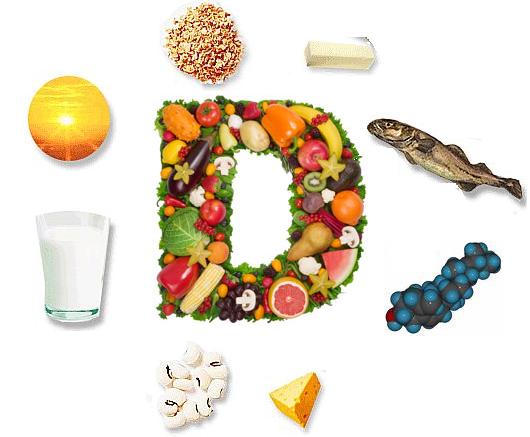Vitamin D and anticancer therapy
There is a good bibliography on the anti-tumoral action of vitamin D.
 Natural vitamin D, contained in some plants, is however preferable to the synthetic type, because the latter is about 10 times more capable of binding with Magnesium, taking it away from the organism, thus causing all the damage that the loss of this incurs (osteoporosis, kidney stones).
Natural vitamin D, contained in some plants, is however preferable to the synthetic type, because the latter is about 10 times more capable of binding with Magnesium, taking it away from the organism, thus causing all the damage that the loss of this incurs (osteoporosis, kidney stones).
Vitamin D induces the inhibition of neoplastic cellular growth: this has been shown in vitro in neoplastic cellular lines; especially of the hematopoietic system, of the CNS, of the prostate; the colon, the ovaries and the breasts.
This action is thought to be expressed at various levels, in particular:
a) by means of apoptosis induction, through the activation of p21, that is, the inhibitor of the kinase proteins;
b) the inhibition of neoplastic cellular growth, which would be blocked in the G1 phase because of the action of the IGF1 inhibitor;
c) by means of cellular differentiation.
Vitamin D conversion factors
Vitamin D is expressed in Calciferol micrograms
1 microgram of Calciferol is equal to 40 I.U. of vitamin D.
Source: The book Thousand Plants against Cancer without Chemo-Therapy, author Giuseppe Nacci, M.D
Vitamin D is a group of fat-soluble secosteroids responsible for enhancing intestinal absorption of calcium, iron, magnesium, phosphate and zinc. In humans, the most important compounds in this group are vitamin D3 (also known as cholecalciferol) and vitamin D2 (ergocalciferol). Cholecalciferol and ergocalciferol can be ingested from the diet and from supplements. The body can also synthesize vitamin D (specifically cholecalciferol) in the skin, from cholesterol, when sun exposure is adequate (hence its nickname, the „sunshine vitamin“).
Although vitamin D is commonly called a vitamin, it is not actually an essential dietary vitamin in the strict sense, as it can be synthesized in adequate amounts by most mammals exposed to sunlight. A substance is only classified as an essential vitamin when it cannot be synthesized in sufficient quantities by an organism, and must be obtained from its diet. In common with other compounds commonly called vitamins, vitamin D was nevertheless discovered in an effort to find the dietary substance lacking in a disease, namely rickets, the childhood form of osteomalacia. Additionally, like other compounds called vitamins, in the developed world, vitamin D is added to staple foods, such as milk, to avoid disease due to deficiency.
Synthesis from exposure to sunlight, as well as intake from the diet, generally contribute to the maintenance of adequate serum concentrations. Evidence indicates the synthesis of vitamin D from sun exposure is regulated by a negative feedback loop that prevents toxicity, but, because of uncertainty about the cancer risk from sunlight, no recommendations are issued by the Institute of Medicine, USA, for the amount of sun exposure required to meet vitamin D requirements. Accordingly, the Dietary Reference Intake for vitamin D assumes no synthesis occurs and all of a person’s vitamin D is from food intake, although that will rarely occur in practice. Beyond its use to prevent osteomalacia or rickets, the evidence for other health effects of vitamin D supplementation in the general population is inconsistent. The best evidence of benefit is for bone health. The effect of vitamin D supplementation on mortality is not clear, with one meta-analysis finding a decrease in mortality in elderly people, and another concluding there is no clear justification for recommending vitamin D.
Wikipedia
